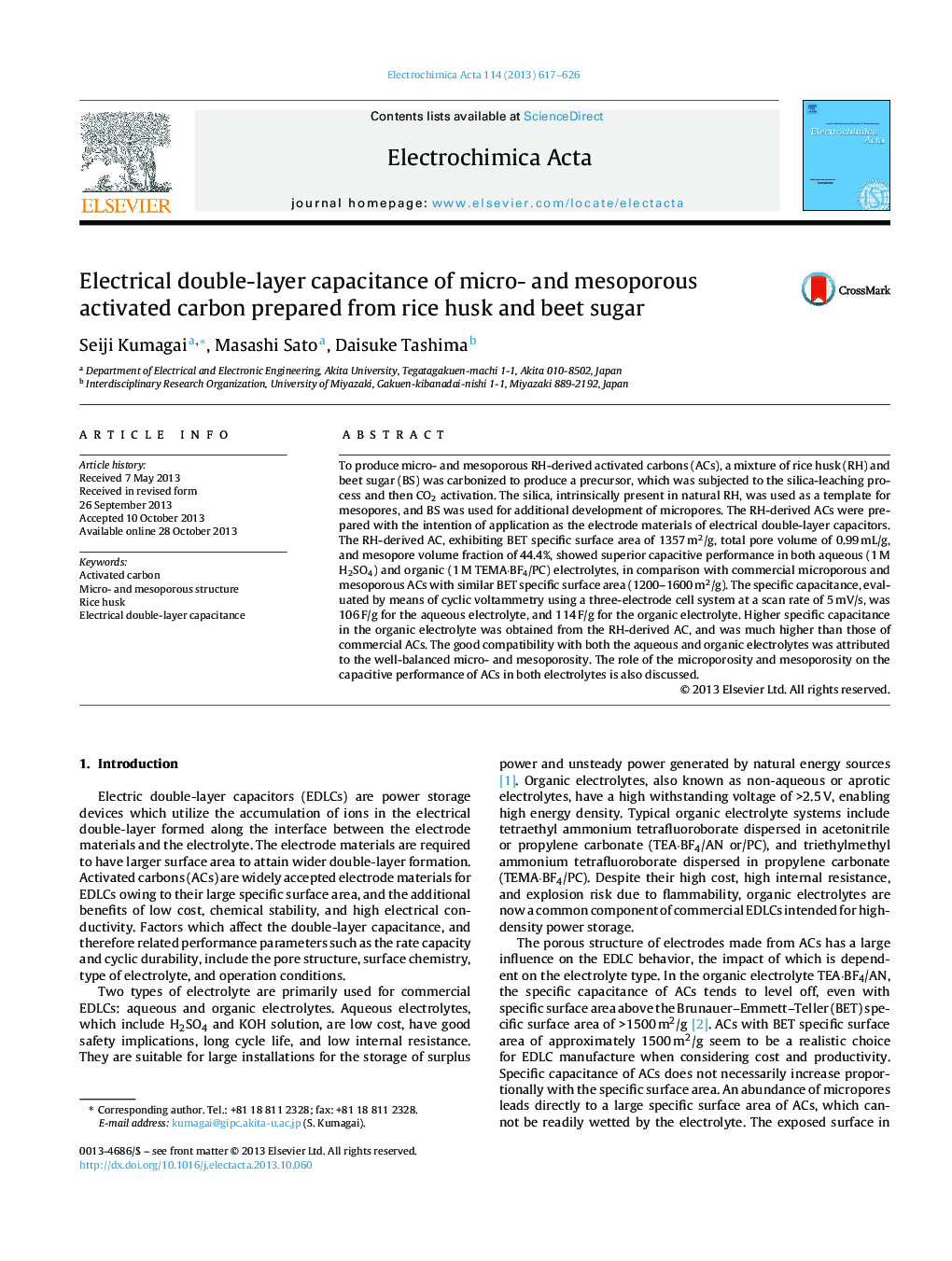| کد مقاله | کد نشریه | سال انتشار | مقاله انگلیسی | نسخه تمام متن |
|---|---|---|---|---|
| 186507 | 459614 | 2013 | 10 صفحه PDF | دانلود رایگان |

• Micro- and mesoporous activated carbon was prepared from rice husk and beet sugar.
• Silica, which is intrinsically present in rice husk, was used as a natural template for the formation of mesopores.
• Beet sugar was used for additional development of micropores.
• The activated carbon exhibited good capacitive performance in both aqueous and organic electrolytes, in comparison with commercially available activated carbons.
• Well-balanced micro- and mesoporosity contributed to the good compatibility of activated carbon with both aqueous and organic electrolytes.
To produce micro- and mesoporous RH-derived activated carbons (ACs), a mixture of rice husk (RH) and beet sugar (BS) was carbonized to produce a precursor, which was subjected to the silica-leaching process and then CO2 activation. The silica, intrinsically present in natural RH, was used as a template for mesopores, and BS was used for additional development of micropores. The RH-derived ACs were prepared with the intention of application as the electrode materials of electrical double-layer capacitors. The RH-derived AC, exhibiting BET specific surface area of 1357 m2/g, total pore volume of 0.99 mL/g, and mesopore volume fraction of 44.4%, showed superior capacitive performance in both aqueous (1 M H2SO4) and organic (1 M TEMA·BF4/PC) electrolytes, in comparison with commercial microporous and mesoporous ACs with similar BET specific surface area (1200–1600 m2/g). The specific capacitance, evaluated by means of cyclic voltammetry using a three-electrode cell system at a scan rate of 5 mV/s, was 106 F/g for the aqueous electrolyte, and 114 F/g for the organic electrolyte. Higher specific capacitance in the organic electrolyte was obtained from the RH-derived AC, and was much higher than those of commercial ACs. The good compatibility with both the aqueous and organic electrolytes was attributed to the well-balanced micro- and mesoporosity. The role of the microporosity and mesoporosity on the capacitive performance of ACs in both electrolytes is also discussed.
Pictorial representation of preparation of micro- and mesoporous activated carbon from rice husk and beet sugar, for electrical double-layer capacitor applications.Figure optionsDownload as PowerPoint slide
Journal: Electrochimica Acta - Volume 114, 30 December 2013, Pages 617–626